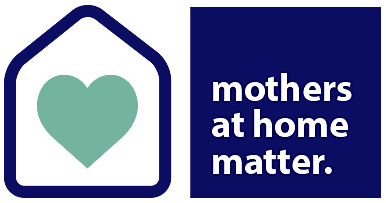‘Toxic Childhood’ book review
My response as I devoured Toxic Childhood [by Sue Palmer] in record time alternated between ‘oh dear’ and ‘phew’. The ‘oh dears’ were related to the many challenges facing children and their parents in the world we are unwittingly creating today. The ‘phews’ were that many of the solutions suggested are much easier to carry out when there is a parent around for the children a lot of the time, which I am.
There is some good news in this book. There are fewer TVs in childrens’ bedrooms than when the first edition was published in 2006. The bad news is that this is because of the increase in handheld devices which children are using in their bedrooms, having eaten their individually microwaved meals on their own, after being driven home from school and kept indoors. The subtitle of the book, ‘How the modern world is damaging our children and what we can do about it’, sums up the content of the book brilliantly. It is worth reading for the suggestions alone. Reading through the ‘life skills for children to learn by the age of 6 or 12’ made me realise that actually I could expect a bit more of my children.
Each chapter is designed to be read on its own, so it is a brilliant book for dipping into, although many of the issues raised are interconnected. In the chapter on school, “The Best Days of their Lives”, Sue Palmer, a former head teacher, explores why more and more children are behaving badly: ‘diet, lack of sleep or outdoor play, inadequate attachment or opportunities for real-life communication, family problems ….[the] national obsession with “selfish materialism”….exposure to screen-based violence and bullying behaviour…a culture that has forgotten the essential elements of successful child-rearing.’ All of these elements are explored in the book. As well as a recap of suggestions made at the end of each chapter, there is a case study examining what is happening in the lives of children from disadvantaged backgrounds.
I was particularly interested to read the chapter on ‘Who’s looking after the children?’ As a working mother herself, Sue Palmer does not flinch from suggesting that what babies and young children really need can be found in their ‘normal environment’ where that is a ‘happy family home.’ She also endorses the value of teaching all parents about the importance of attachment and attuned parenting and questions ‘how far an institution [can] duplicate the security and stability of home and the sensitive, personal, human engagement of a single familiar carer?’ These are such important questions, but so rarely debated for fear of upsetting families who can’t find a way to have a parent at home most of the time, that it is refreshing for them to be raised by someone who has researched the topic at great length and is a neutral observer.
Moving onto less emotive ground, the book highlights a number of areas which all parents need to focus on, whether they work outside the home or are full time carers for their children. The book opens with a chapter on the importance of the family meal, both in terms of its content and of the importance of time spent eating together for communication and the passing on of manners. I was reminded AGAIN not to have my mobile at the table, a fact which is picked up at length in the chapter on communication: ‘It’s good to talk’. Sue highlights the importance of face to face talking in developing babies’ ability to communicate and express themselves. She explores why it is that technology can never replace communication with a live human and suggests ways of developing a conversation with a child – although she doesn’t cover why it is no child can ever answer the questions ‘what have you done at school today?’ or ‘what was the most interesting thing you learnt today?’ or ‘who did you play with at breaktime?’ or any number of open questions designed to elicit information about that day’s activities at school! In spite of this, Sue states that the best way we can help our children do well at school is to ‘talk and listen’, or rather, ‘listen and talk’
I think Sue sums up what children need and why they aren’t getting it in today’s society in these words:
‘Our consumer society leads us to believe that the more costly and complex an item is, the more its value – this is not the case with children. (Although in a way it is true: human beings are complex and these days their time is costly…and time with the human beings who are most special to them is what children most need and crave.)’
So, the primary weapon against the toxic childhood our children are experiencing is time with us, their parents. But we need to use this time wisely, being fully engaged with our children, providing for their physical needs for food, play and sleep, providing a safe haven from which to explore the world and to which they can retreat when the world gets too much.
There are so many more words of wisdom and warnings about the age our children live in that I can’t recommend this book highly enough. The book confirms the vital role all parents play in our children’s lives and it equips us to recognise and confront the challenges that our children face so that we can ‘detox’ their childhood.
Claire Paye
This article first appeared in the MAHM Spring Newsletter 2015.
